With its centuries-old trees, shady babbling irrigation canals, and a large lawn expanse enhancing the views and the Gothic Revival greenhouses covered in Ficus pumila, this time-honoured park is now a centre for art and environmental culture.
Towards the end of the 18th century, Marquis Maurizio Massel di Caresana initiated the transformation of an old farm building into an aristocratic residence. His wife Maria Elisabetta della Marmora, known as Babet can be credited with the Gothic Revival style of the building and the landscaping of the garden, defined between 1823 and 1830, which initially saw the contribution of German architect Xavier Kurten, who had recently been appointed Head of the park and gardens of Racconigi. In 1866, as a wedding gift to Teresa Massel, Maria Elisabetta’s niece, Count Luigi Cacherano di Bricherasio offered to cover the expenses for further modifications of the complex increasing the Gothic Revival decorations, such as the family emblems on the facade, testifying the union of the two family names. The six-hectare park expands around a great lawn adjacent to the castle, covering the perimeter of the property with greeneries, tree groves and isolated trees. In the past a well-structured network of irrigation canals used to supply water to a no longer existent pond. The property is home to over 1,700 trees of different sizes and types, covering over 70 species: amongst camelias and hydrangeas stand majestic trees of exotic origin such as
Highlights
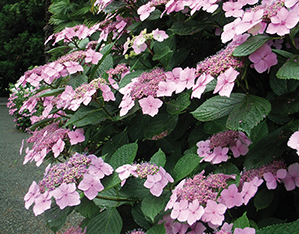
Hydrangeas
Between June and September, the park is in bloom with the Hydrangea macrophylla varieties of “Otaksa” and “Mariesi Perfecta”, a hybrid that was selected in France by Lemoine in 1904 that is one of the most interesting specimens in the park for its age and presence. The collection also includes late bloomers such as the
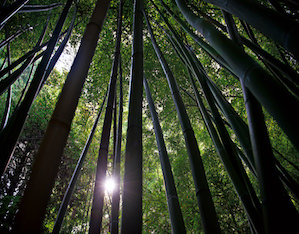
The bamboo grove
By the keeper’s house grows a beautiful giant bamboo grove, an emblem of late-19th-century botanical collections. The irrigation canal flowing across creates a relaxing sound while allowing the vegetation to thrive.
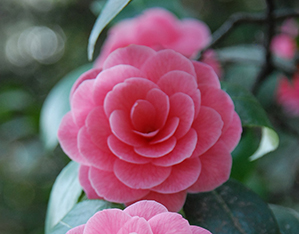
Camelias
The Park features great camelia bushes that were planted during the 19th century. In March 2019 over 130 camelia cultivars were added deriving from old exemplars belonging to two of the earliest and most notable camelia collections in Italy, the former Albergo Eden in Verbania and Villa Durazzo Pallavicini in Pegli.
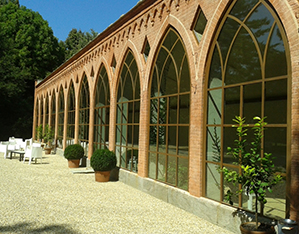
The conservatory
This 1831 Gothic Revival greenhouse erected at Maria Elisabetta della Marmora’s behest recalls similar structures of royal and aristocratic residences. Archive records attest that in 1870 this conservatory held over 1,300 potted plants, of which around 50 were citrus trees.
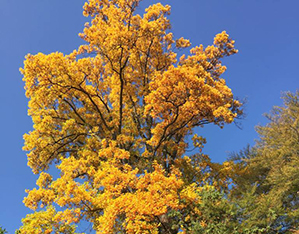
The monumental trees
The park’s remarkable tree population includes five notable specimens listed as Monumental Trees: a hornbeam, a Ginko Biloba, a bald cypress, and a yew tree and liriodendron, the last two being the oldest and tallest specimen respectively.
 Castello di Miradolo
Contacts
Castello di Miradolo
Contacts
Contacts
Telephone:+39 0121 376545
Address
Via Cardonata, 2
10060, San Secondo di Pinerolo (TO)
 Castello di Miradolo
Opening times and prices
Castello di Miradolo
Opening times and prices
Opening hours
The Castle is open
- Saturday, Sunday and Monday from 10.00 a.m. to 6.30 p.m. by appointment only (within the previous day)
- last entrance at 17.00
Pricing
Park
- Full price: € 5,00
- City of Pinerolo youth card: € 5,00
- Reduced price: € 3,00
- Children 0-6 years, cultural passport: free admission
Exhibition
- Full price: € 12,00
- Reduced price for groups, 14-26 years old, over 65 and conventions: € 10,00
- Reduced 6-14 years old: € 5,00
- Youth Card City of Pinerolo: € 5,00
- Reduced price Secondary School: € 6,00
- Reduced price Secondary School Pinerolo: € 4,00
- Reduced primary and middle schools: € 3,00
- Museum subscription, Torino+Piemonte Card: free entrance
- Children 0-6 years, Cultural Passport: free entrance
 Castello di Miradolo
How to get there
Castello di Miradolo
How to get there
Address
Via Cardonata, 2
10060, San Secondo di Pinerolo (TO)
Latitude: 44.874181
Longitude: 7.309754
How to arrive by road
From the Turin ring road take the Pinerolo motorway. Then continue on the SR23 in the direction of Sestriere until the exit for San Secondo di Pinerolo. Then follow the signs for Castello di Miradolo.
How to arrive by train
From Turin: regular departures with Trenitalia – SFM Line 2 service to Pinerolo.
How to arrive by bus
- Regular departures with the bus companies La Cavourese and Sadem to the train station of Pinerolo. From Pinerolo station take bus line 1 – Autolinee La Cavourese in the direction of San Secondo di Pinerolo (departure every hour and 7 minutes) and get off at Miradolo stop. For the return journey, the bus in the direction of Pinerolo leaves every hour and 32 minutes. Journey time: about 10-15 minutes. Please note: there is a limited number of buses on public holidays.
- Periodically the Cosso Foundation organizes a shuttle service to connect the centre of Turin to the Castle of Miradolo.
- The Cosso Foundation has entered into an agreement with a company in the sector, managing to obtain some discounts on private coaches for schools.
 Castello di Miradolo
Services/Accessibility
Castello di Miradolo
Services/Accessibility
Services
The bookshop is open on Saturdays, Sundays and Mondays from 10 am to 6 pm.
Ample unattended parking is available.
The Park offers a wide range of educational activities for families, groups and schools. It is possible to organise guided tours or take part in the activities proposed for children, to visit the structure with the help of audio guides and to use the tools provided to support the visit for people with disabilities.
Cafeteria
- The cafeteria is open on Saturdays and Sundays. Openings are available by appointment.
- The Park offers visitors a picnic area.
- Occasionally, in spring and summer, tasty picnic baskets are made by appointment, to be eaten in your favourite corner of the Park.
Accessibility
The Castle and the Park of Miradolo are safely accessible to everyone.
- Thanks to the consultancy of professionals and of some associations, such as APRI ONLUS – Associazione Pro Retinopatici e Ipovedenti, seasonal routes and audio narratives have been devised to allow access to the various places and the involvement of visitors with disabilities.
- All internal and external routes are accessible to visitors with motor disabilities. All in-depth materials, both print and audio, are provided in Italian and English.
- The hearing impaired can use special maps complete with Qr-code.
- For the visually impaired, information in Braille accompanies the Park’s audio story, written in a specifically descriptive manner when necessary.
 Castello di Miradolo
Private events
Castello di Miradolo
Private events
At times other than the normal opening to the public, the Castle of Miradolo offers the possibility to organize many private events. For further information consult the
 Castello di Miradolo
Itineraries
Castello di Miradolo
Itineraries
You could find the garden in these itineraries
 Favorite saving result
Favorite saving result
 Warning!
Warning!
You've have to sign up or sign in to add this element to your favorites.
